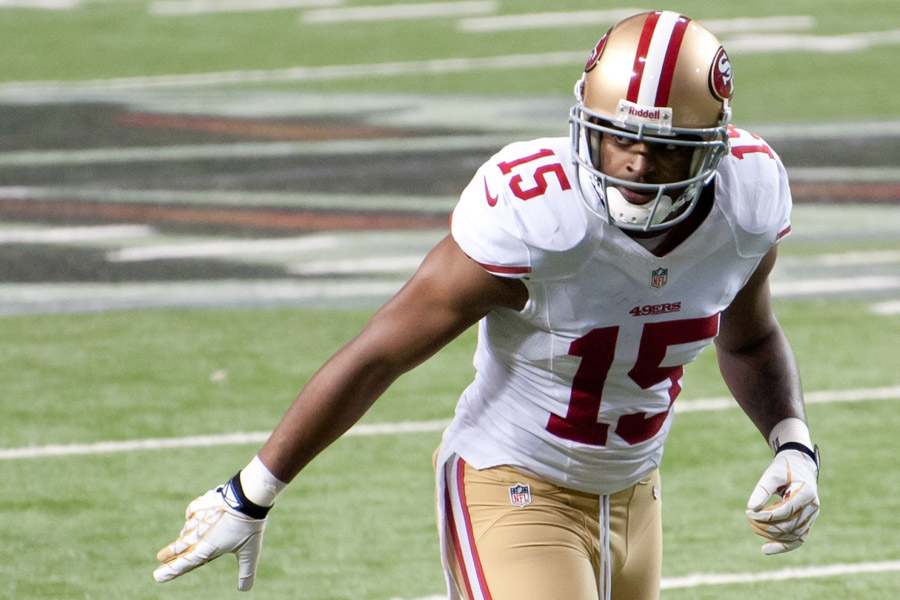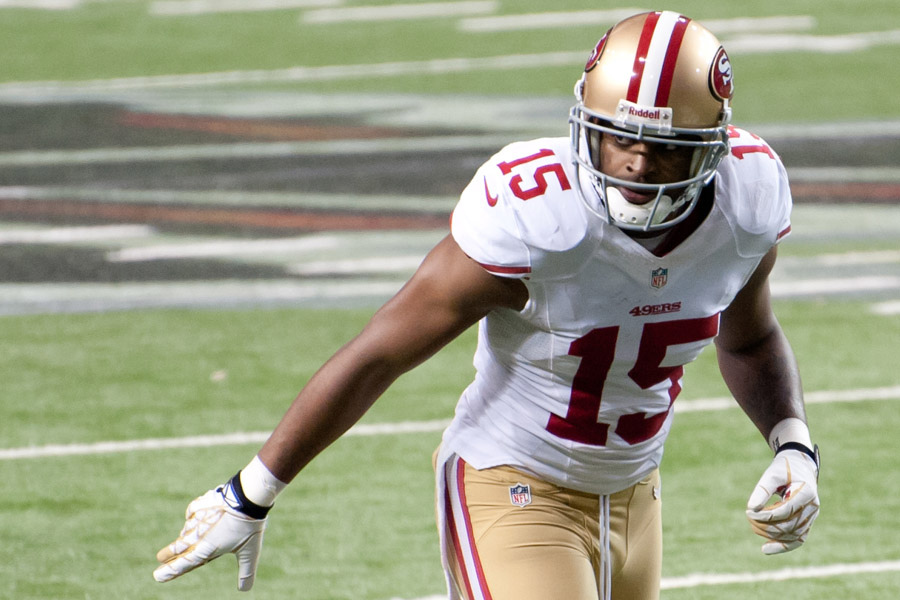[youtube http://www.youtube.com/watch?v=iMm1Wih0kug&w=420&h=315]
Yesterday, I called the Tuesday sessions at the Senior Bowl Momentum Day, as players try to build on their strong performances from Monday’s opening practice. On the way to Ladd-Peebles this morning, Cecil Lammey said that Wednesday should be called Confirmation Day. I think that captures the theme of the week perfectly. Though there were fewer scouts present at today’s chilly practice sessions, players are striving to show that they aren’t one-session wonders against better competition.
In true Confirmation Day fashion, players like Aaron Donald and Chris Borland added one positive practice rep after another to their Senior Bowl portfolios.
But it was Dee Ford who put an authoritative – and hilarious – cap on Confirmation Day.
Here in Mobile, players practice in full pads but aren’t tackled to the ground. Coaches want plays completed to ensure players are prepared for the game on Sunday and to allow scouts and coaches to see a play to its completion. Defenders are asked to tap the quarterback or ball carrier when they get there rather than take them to the ground and risk injury or end a play too soon.
That didn’t happen on the final play of the session. Ford and Kyle Van Noy, who’s been similarly dominant in pass rush all week, met at the quarterback and dumped him on the cold turf. On his way around the edge, Ford let out a “Wheeeeeeeeee!” that echoed throughout the stadium, preemptively dropping the mic on a stellar week of practice. That prompted Matt and I to debate other ways in which Ford might announce his presence as he approached the pocket.
Our top three suggestions for Ford:
- Stick with the “Wheeeeeeee!” theme, which reminded us of Slim Pickens dropping the atomic bomb at the end of Dr. Strangelove.
- Calmly and quietly hum The Godfather Theme (City Slickers II Style) from his three-point stance.
- Whistle a few bars of The Farmer in the Dell and have his linemates yell, “Omar comin’!”
But there’s another reason Confirmation Day resonates with me. We are still many weeks from the draft and the evaluation of these players will be an ongoing process. Each of the players here in Mobile will get multiple looks between now and May, as we seek to confirm that what they showed against higher competition matches what they were able to do during game action.
As always, there is a long list of Senior Bowl prospects I’d like to revisit with a more critical eye.
DT Ra’Shede Hageman – Expected him to push interior line around much of the week. Wasn’t as consistent as I’d hoped and had difficulty getting back to the passer after initial penetration. I want to see how well he squeezes the pocket outside of Senior Bowl tackling rules.
DT Will Sutton – Sutton was Jekyll and Hyde this week. When successful, he was quick and powerful in pass rush drills and against the run in team drills. But he was on the ground too often. So was Sylvester Williams last year, however. Word is that he was asked to put on 25 pounds last offseason and never adapted. His 2012 tape may be most informative.
DT Deandre Coleman – Man mountains Dan McCullers and Hageman drew more attention, but Coleman had similar size. I didn’t look at Coleman’s college game tape before arriving in Mobile. He’s high on my list to watch in the coming weeks.
DE Chris Smith – Smith could’ve been overshadowed by Ford’s eye-popping reps, but wasn’t. I thought he looked slimmer on film, but his lower body was stacked here. I want to take another look at how he shed offensive tackles after being engaged.
DE Trent Murphy – Lots of splash plays on tape, but was handled too easily by offensive tackles here. Didn’t see an elite first step and he tired too often at the end of his series of reps. I want to review his technique on those splash plays.
DE Kareem Martin – May be biggest disappointment of this week for me. Measurables catch your eye, but was ridden out of running drills and team sessions like he was on skates and very rarely won in pass rush. I want to see if there’s any consistency in his game film.
ER (edge rusher) Dee Ford – There’s a lot to like about Ford in pass rush. While he wasn’t ineffective against the run here in Mobile – he was particularly explosive in backside pursuit – his size raises questions about whether he can stand up when teams run at him. That will be a focus of more film study for me.
ER Kyle Van Noy – Van Noy took most of his snaps at weak side linebacker this week, though the North coaches did bring him down for more one-on-one pass rush reps and put him on the line in Under alignments and allowed him to rush the passer in some team reps. He dominated in those situations, but often lagged behind in coverage and let up too often when engaged by offensive linemen on run plays. I want to see if he showed a more well-rounded game at BYU.
ER Marcus Smith – Smith’s best attribute is his pass rush, but he spent 90 percent of his reps with the linebacker group this week. He struggled in coverage and never found a rhythm in pass rush drills. I want to revisit his pass rush technique against his stiffest college competition.
ER Jerry Attaochu – A close second behind Martin as the player who fell most under my expectations here. I’m willing to give him a pass because he took few reps with the defensive end group, but he was dominated on every one-on-one rep with an offensive lineman and didn’t fare much better against backs and tight ends in pass protection drills.
LB Chris Borland – Did everything well in Mobile. Fluid and powerful in run support, dominated in pass rush drills with multiple moves, handled himself well in coverage and was responsible for at least three turnovers. Borland is one of a few players I watched extensively before coming to Mobile. Saw more snaps as a blitzer than in coverage; I’d like to focus on his coverage snaps and watch his stack and shed technique more closely.
LB Chris Kirksey – Josh Norris and others sang his praises before practice began. He flows to the ball well and is willing to physically engage blockers at the point of attack. I want to see how consistently he sheds and take another look at how well he drops and reacts in coverage.
LB Telvin Smith – Looked like a safety during weigh-in, but surprisingly showed a willingness to stack and shed when he had to here. Looked comfortable in coverage, but footwork was lacking at times. Another player I haven’t evaluated on tape at all who deserves a full evaluation.
LB Christian Jones – Jones didn’t do poorly in any drill, but there were technical issues (poor hand use, playing too high, inability to shed consistently) throughout. He didn’t seem to play full speed during the games I reviewed at full speed, but I’m hoping to see more on second look.
LB Jordan Tripp – Active and quick to react on running plays. But turned away when blocked and rarely disengaged. May not be much Montana tape to be found, but he wouldn’t be in Mobile if the coaches hadn’t asked Phil Savage to invite him. I’d like to see what they saw.
S Ahmad Dixon – Dixon grabbed receivers too often and let his technique lapse during one-on-one drills. One scout who interviewed him told me he might have trouble picking up complicated coverage schemes. I want to see how well he reacted to routes in front of him in college game action.
S Deone Bucannon – Had the look of an all-around safety during drills and team sessions. But reps were limited here due to the number of swing corner / safety prospects on the North roster. I need to take an extended look at his college tape.
S Jimmie Ward – Ward did his large cheering section proud this week, looking fluid and instinctive in coverage. At just 191 pounds, however, I’d like to re-examine how physical he was against the run at Northern Illinois.
S Terrance Brooks – Brooks impressed with his change of direction and closing speed today and he looks a little bigger than 197 pounds in pads. I want to see how he performed against the run during game action.
For more Senior Bowl Info also check out:
- The Senior Bowl Preview
- The Senior Bowl Weigh-In
- Day 1 Notes for Offense and Media Night
- Day 1 Notes for Defense
- Does the Senior Bowl Put Edge Rushers at a Disadvantage?
- Day 2 Notes for Defense
- Day 3 Notes for Offense
For analysis of skill players in this year’s draft class, download the 2013 Rookie Scouting Portfolio.The 2014 RSP will available April 1 and if you pre-order before February 10, you get a 10 percent discount. Better yet, if you’re a fantasy owner the 56-page Post-Draft Add-on comes with the 2012 – 2014 RSPs at no additional charge and available for download within a week after the NFL Draft. Best, yet, 10 percent of every sale is donated to Darkness to Light to combat sexual abuse. You can purchase past editions of the Rookie Scouting Portfolio for just $9.95 apiece.










